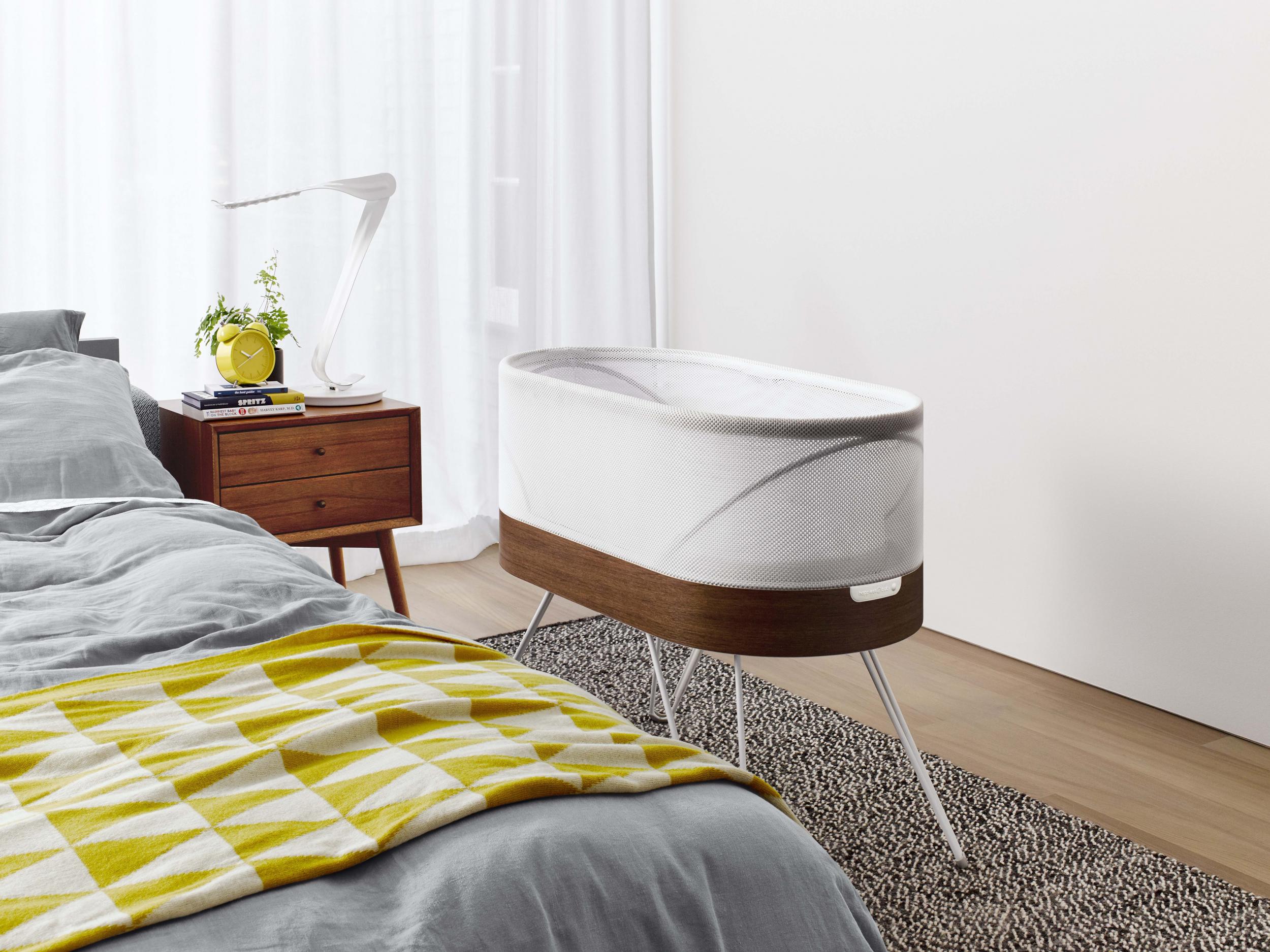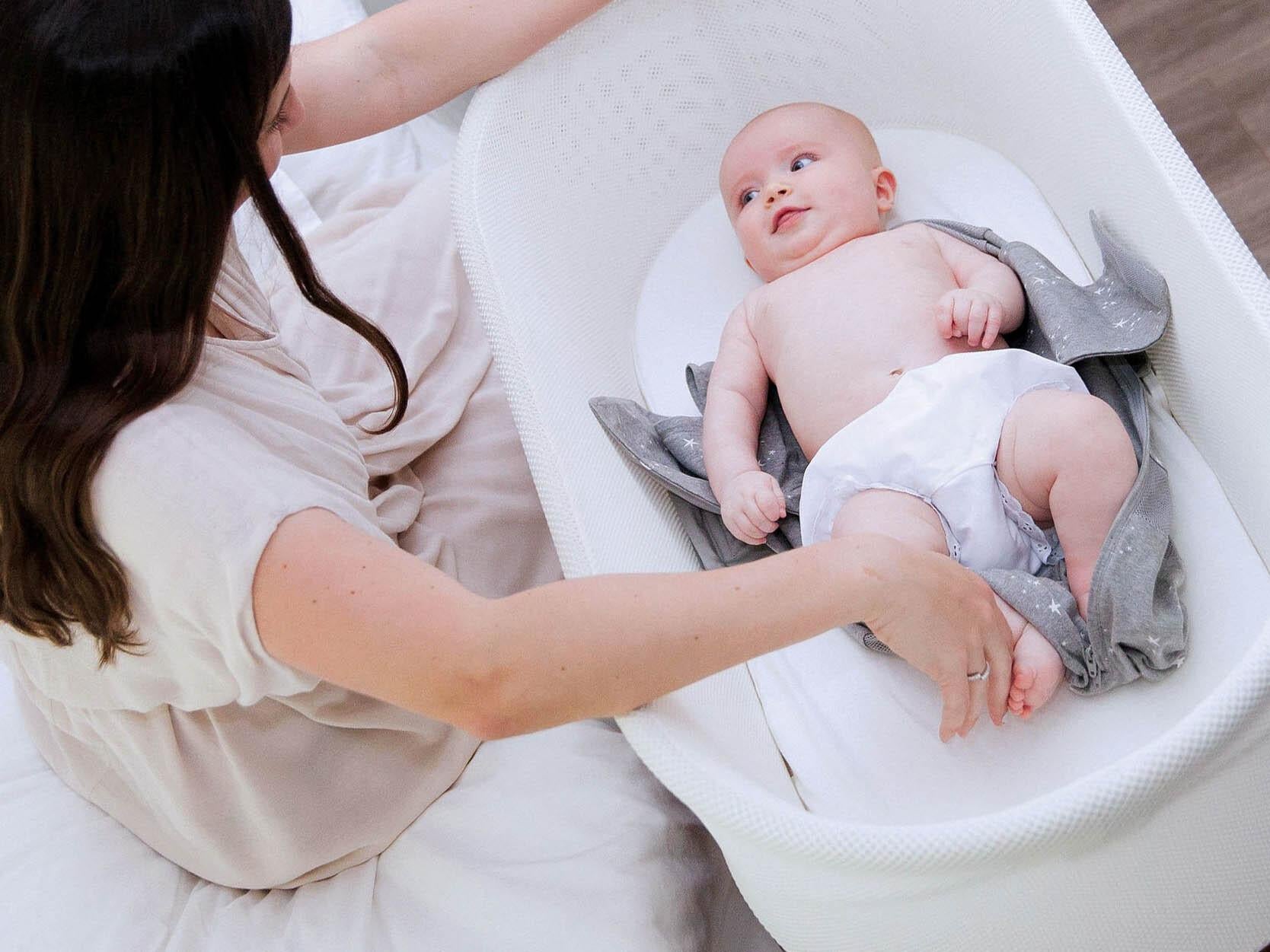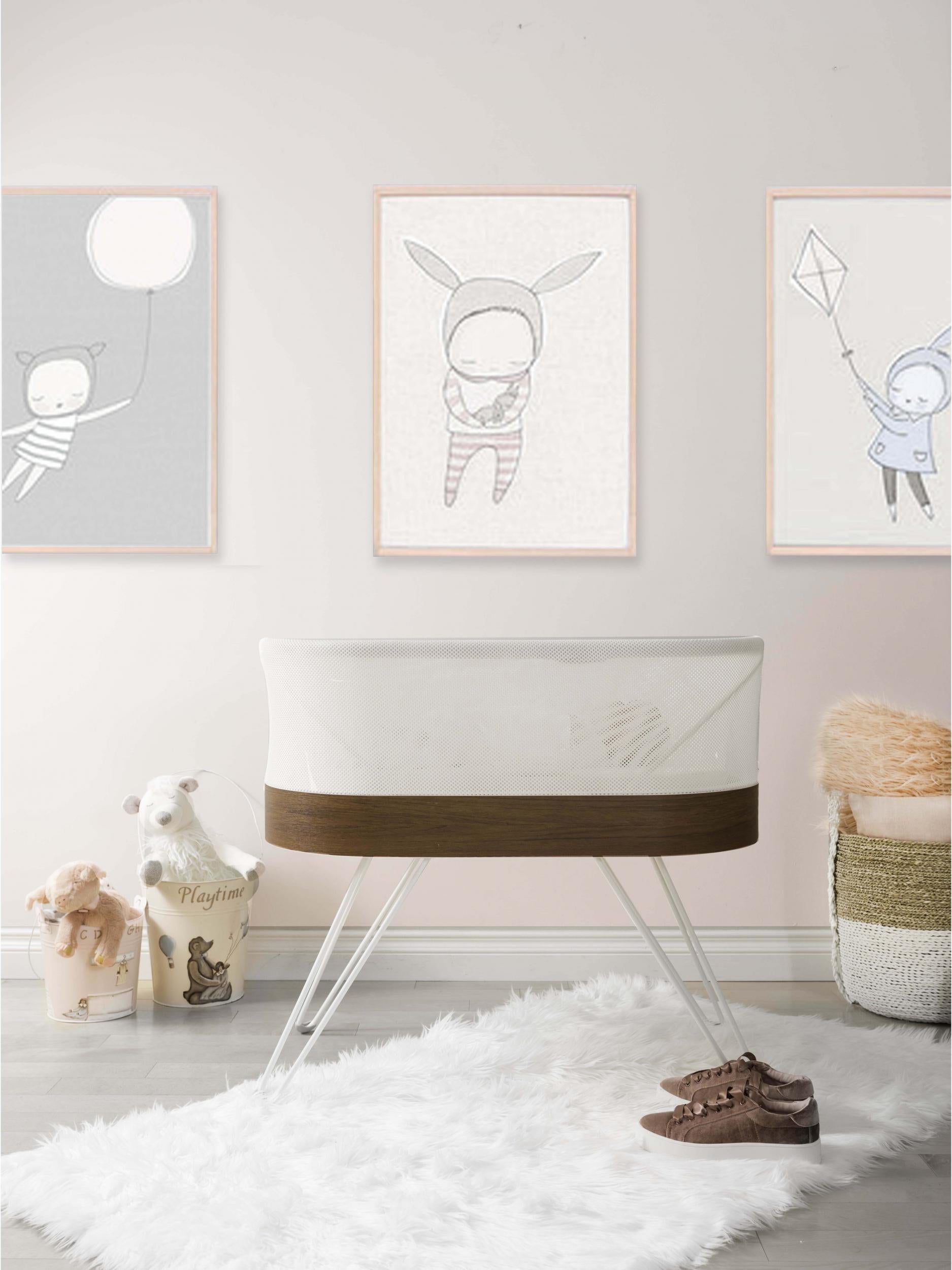Priceless or overpriced: Is the wifi-enabled Snoo baby cot worth the £1,000 price tag? We put it to the test
It was like watching the work of some absurd Derren Brown-style illusionist. She’d been furious, not seconds before, and now here she was just lying there, eyes open, little head jiggling away, in complete silence

Your support helps us to tell the story
From reproductive rights to climate change to Big Tech, The Independent is on the ground when the story is developing. Whether it's investigating the financials of Elon Musk's pro-Trump PAC or producing our latest documentary, 'The A Word', which shines a light on the American women fighting for reproductive rights, we know how important it is to parse out the facts from the messaging.
At such a critical moment in US history, we need reporters on the ground. Your donation allows us to keep sending journalists to speak to both sides of the story.
The Independent is trusted by Americans across the entire political spectrum. And unlike many other quality news outlets, we choose not to lock Americans out of our reporting and analysis with paywalls. We believe quality journalism should be available to everyone, paid for by those who can afford it.
Your support makes all the difference.There is a moment when you first use the Snoo smart sleeper, as you gaze upon your child zipped into a tiny Egyptian cotton straitjacket, looking like a novelty sausage with Buzz Lightyear wings, when you wonder whether you’re doing the right thing.
Not least as by this point, you’ll have parted with around £1,000 for the privilege as well.
In my case our daughter, Rose, was just over a month old when the Snoo arrived. It was only a chance conversation with a friend visiting from New York that alerted me to its existence. It weighs 20kg, but so transformative had it been on family life that he once paid excess baggage to take it on holiday for a week.
The Snoo is a self-rocking, self-shushing, white-noise-making, internet-enabled wonder crib. With its mid-century modern legs, wood-effect trim, and ivory breathable mesh sides, it is quite something to look at, even without its super-smart technology.
You zip your baby inside the swaddling sleep sack, clip the sack inside the crib and press its solitary button. Snoo then gently oscillates away, all the while playing soft white noise.
What makes Snoo unique is that it is reactive to the baby’s mood. It listens out for crying and fussing, then moves up through its five separate speeds and noise levels until the baby is placated. The louder the baby screams, the faster the ride, as Geri Halliwell almost sang. Then, when serenity has been achieved, it slowly returns down its levels to gentle calm.
It also has an app that allows you to move up and down the levels, should you wish. If you think a quick blast of level four will do the job, you don’t have to wait for the machine to get there on its own. And often it will indeed do the job. Said app also records how long your baby has slept for every night, and includes naps.

The Snoo’s US launch in 2016 had been sufficient to cause gentle waves of interest, possibly even controversy, on these shores. The Independent wrote about the opinion-dividing promotional video of a baby in the Snoo, as it howled ever louder and was rocked ever faster until it returned to sleep. Some remarked on social media with disgust that it was “doing the parents’ job for them”. Others remarked with delight with words to the exact same effect.
In the US, big companies like Snapchat now offer them as a maternity benefit to employees. This week the product’s inventor, the baby sleep expert Dr Harvey Karp, has donated several of the devices to NHS hospitals.
You can trust our independent reviews. We may earn commission from some of the retailers, but we never allow this to influence selections, which are formed from real-world testing and expert advice. This revenue helps us to fund journalism across The Independent.
Goodbye to sleepless nights?
It is perhaps not the most objective product to review, as all babies are different, and I only have the one. The Snoo is currently only sold at happiestbaby.co.uk, where it retails for £1,145 – but is regularly discounted to as low as £800, and is currently £995.
There is also the fact that the Snoo is supposed to stretch out and increase your baby’s sleep for the first six months of its life, until the baby is ready to move into a cot. Snoo’s success can be measured instantly, by longer, quieter nights. But the idea is that it teaches your baby to be a better sleeper. Success on that front cannot be ascertained for some time.
Even so, with the exception of the actual birth, Rose’s first go in the Snoo is right up there with the most extraordinary things I’ve ever witnessed. She was not in an altogether good mood when she was first placed in it. She’d been unduly lifted and woken from her Moses basket, where she’d happily spent her first month of life as something of a champion sleeper, only to be lowered into this bizarre contraption.
Rose howled, and howled again, as babies that don’t want to be put down tend to do. Instantly the machine clocked her heightened rage and moved up through its gears, the white noise louder, the rocking faster and Rose’s state of animosity instantly began to reverse in inverse proportion to the rising sound and motion of the machine. In under 20 seconds the crying stopped.
It was like watching the work of some absurd Derren Brown-style illusionist. She’d been furious, not seconds before, and now here she was just lying there, eyes open, little head jiggling away, in complete silence. About 10 seconds later she was fast asleep.
Such scenes have been a regular occurrence in the four months since.
Swaddling, shushing and swinging
Snoo is the fruit of years of research by American baby sleep scientist Dr Harvey Karp. His book, Happiest Baby on The Block, is a consistent US bestseller, which has prompted various celebrities to refer to him as “the baby whisperer”.
For some time, Dr Karp has advocated the “five S’s” of baby-calming: swaddling, shushing, sucking, swinging and (temporarily placing the baby on their) side or stomach. Many of these have been borrowed from the Kung tribeswomen of the Kalahari desert, who strap their babies to them permanently for the first three months of life. The Snoo is three of the five S’s brought to fully automated, internet-connected life (sucking and side/stomach are beyond it, for now).
Many baby sleep scientists talk of the first three months of life as the “fourth trimester”. It is the period in which a baby feels more at home in the womb than in the world. Everything that humans have done to comfort babies for thousands of years are done to recreate life in the womb. Shushing sounds like the loud white noise to which babies have become accustomed. For months they have been rocked about whenever their mother moved anywhere.
The Snoo replicates life in the womb, firing up the baby’s in-built calming reflex, that will allow it to take itself off to the land of sleep.
“Babies have non-stop loud rhythmic sounds, constant motion in the uterus, 24 hours a day,” Dr Karp tells me over the phone from California. “And then it’s just taken away the moment they’re born.”
Top speed
There have certainly been curious moments along the way. In her first week in the Snoo, Rose is at the back of the living room in the evening, quietly rocking away while her parents watch a film. In fairness, Rose is no more startled than anybody else by the massacre at the end of Quentin Tarantino’s Once Upon a Time in Hollywood. This is certainly the first time Rose has ever heard gunfire. Within seconds she is screaming louder even than the member of the Manson family on screen, who’s just had Brad Pitt pulverise her head into the mantelpiece. The machine roars up to its highest level, the loud, womb-replicating heartbeat almost adding to the cinematic experience, and by the time Leonardo Di Caprio torches the woman in the pool to a crisp with the Nazi flamethrower, Rose has long since returned to slumber.
This was the first occasion Rose troubled level five, the highest setting. And on its highest levels the Snoo really is a sight to behold. Rose’s head waggles away like a weeble driving over speed bumps. Dr Karp regularly faces down questions on the jiggly-head front too.
But the product has sailed through every single regulatory approval stage in its highly litigious homeland in a way that few baby products do. The highly popular Sleepyhead, branded the DockATot in the US, quickly became a cult product for new babies, which Dr Karp calls “the safest baby bed ever made.” It’s not an unreasonable claim.
However dramatic it looks, at top speed, the Snoo actually oscillates by a matter of millimetres, and is significantly less intense than the jiggling experienced by a baby in the womb, when its mother goes up and down the stairs, for example. Level five is considered “car nap” equivalent.
Swaddling a baby also divides opinion. Many midwives discourage it, but just as many swear by it. There are risks involved, particularly with overheating, but the Snoo’s swaddle sack has breathable mesh around its thighs and shoulders. Too tight swaddles can also cause hip dysplasia. Snoo’s zip-up bag lets the knees bend and flex and open. The Snoo swaddle sack also comes with little wings that fix into the base of the crib to prevent the baby flipping in the night. In short, all of the risks of swaddling have been patiently and ingeniously addressed.
Overpriced or priceless
The other criticism of course is that £1,000 is a vast expense. The extraordinary costs involved cannot be ignored. Dr Karp likes to compare the cost not to rival products, of which there are basically none, but to the cost of a sleep nanny or night nurse, which is significantly more.
“This is going to teach your baby to be a better sleeper and ultimately allow you to be able to be the parent you want to be”, he tells me. “Snoo is not a bed, Snoo is a member of the family. It is a caregiver,” he adds.

There’s also no doubting that if you look on the many Snoo related forums in the US, where the product has been around longer, wherever price is mentioned you will find that some people have had success buying them secondhand. For anyone worried about hygiene, the Snoo sacks can be bought separately for £29.95 and the fitted sheets for the bassinet are £17.95.
The verdict
It is, of course, impossible for me to produce a controlled experiment. I have only one baby to work with and she was a pretty good sleeper from day one. When the Snoo arrived, very little changed.
It would be plain wrong to say it eliminates all fussing. There were many, many nights when Rose still demanded to be rocked and shushed by hand for 20 minutes or more before being put to bed, but these were very much the exception not the rule.
There are other occasions when Rose just isn’t having any of it. If then Snoo fails to calm her after a few minutes on the highest level, the machine simply shuts down and the app issues you a notification to say your baby needs your care. One early, tentative trip to the cinema, leaving Rose in the care of her grandmother was peppered with such notifications.
Sometimes you’ll find yourself staring at the monitor downstairs, gripped by epic 40-minute battles of Snoo vs Rose as baby and machine fight to outsmart each other – a kind of oscillating infrared recreation of Kasparov vs Deep Blue. Rose’s little wails go up and down the levels, Snoo checking her all the way, a gruelling war of slumber attrition, which, ultimately, Snoo usually wins.
We are currently two months short of the end of our Snoo journey. For the final month, it has a weaning mode, in which vibrating and rocking are only activated if the baby cries out in the night. We have not yet reached that stage, but there are thousands of pages of internet forums, and a huge Facebook group of “Snoo mommas” (everyday sexism), and tales of weaning off nightmares are hard to find.
On balance, I am sold. It is hard, really, to accept that in two months’ time she’ll be done with it, as it’s designed for babies up to six months (or when they can get on their hands and knees). Of course, it will only be then that we will know for sure if we did the right thing. It is highly likely that she has not become dependent on it. Whether the same can be said for her parents is another question.
In any event, we already have a lengthy queue of friends lining up to borrow it.